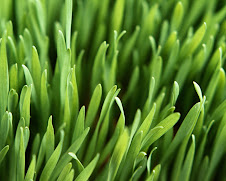I know there is information all over the place regarding taking care of your lawn irrigation system. I see information from water districts, pamphlets at hardware stores, television campaigns, and even signs on buses going down the street... what will it take for people to take notice of their water wasting ways? I implore you to take a look at your water bill... what does it show? Would you like it to be lower? How about going "green" without spending tons of money ripping out your lawn or installing expensive irrigation equipment?
Well, this is my list of common problems I see on a continuous basis and how you can correct them and save some money and conserve water:
- Please don't water you lawn or planting beds in the middle of the day... you lose tons of water to evaporation and if the temperature is hot you run the risk of scalding your plants or lawn. Every water district has a watering time frame they tell their customers... watering in the early morning from 1AM to 5AM is a great time frame to run sprinklers.
- There is no need to run your sprinklers every single day, especially in wet seasons! It's funny, even in the summer months I water my lawn 2 to 3 times a week and my lawn is just as green as the folks next to me who run their sprinklers every single day... they even run their sprinklers in the rainy season! With proper maintenance and spray measurements you can easily maximize your watering and eliminate the need for constant and over-watering.
- Please take notice that your sprinklers are watering the road or your neighbor's house! There are different sprinkler heads for different uses and they can easily be adjusted with a screw driver if they're standard spray heads or adjusted by hand if you have impact rotor sprinklers. All sprinkler heads state the pattern of spray and how far the spray can travel. If you have a 3' section of lawn, please don't install a sprinkler that sprays 10' in a full circle pattern! If you match the right sprinkler with the right size area to be watered you will save water, head aches, and lots of money in the long run.
- If you have a broken sprinkler head... replace it. Whether it's you or the gardener down the street, someone needs to replace the broken sprinklers in your yard. Maybe you don't notice because your sprinklers run at night, but you will notice when you look at your water bill a little closer. A broken lawn sprinkler head can waste gallons of water and hurt you lawn and plants by either over watering or under watering depending on which way the wasted water is flowing. If the broken sprinkler is close to you home or garage you may develop foundation problems over time if all that wasted water is soaking into the ground where a building's foundation is located. The choice is yours... spend a couple dollars to fix a sprinkler or suffer the consequences down the road in a more costly situation.
If you pay attention to your lawn irrigation system you can really do your part to conserve water, help the environment, and also put a little "green" back in your pocket at the same time. You don't have to go out and put in a drought tolerant garden or permeable paving... you just need to be a little more consciences and take care of what you all ready have. Too many homeowners and business owners are out there right now wasting water and money just because they're lazy or they just don't care. It's up to you to do your part... now go outside and do some "public service" and make sure your lawn sprinklers are watering your lawn... not the road!


